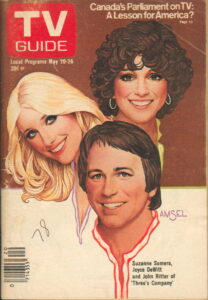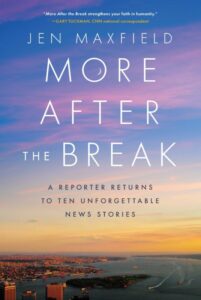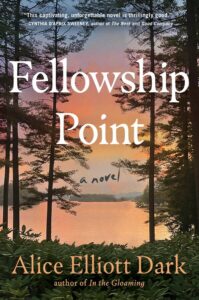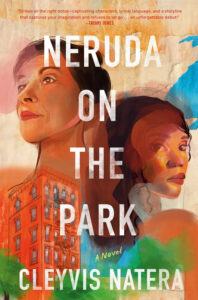
Rom-Com at its best (Houston, Texas and TX ranch; present-day): Up for a literary game? The creator is Katherine Center, who’s been called “the reigning queen of comfort reads”. Her ninth, quick-witted, romantic feel-good novel certainly attests to that pleasurable characterization.
The game: To guess what kind of job Center’s newest leading lady Hannah Brooks has? Hannah calls it “elite.” The leading man, the Sexiest Man Alive actor Jack Stapleton at over six feet tall says it’s “the scariest job of anybody I know.” The “job is not about violence, it’s about avoiding violence.”
Need a few more hints? Hannah’s a pro at “going unnoticed,” yet she’s unable to sit still even when the novel opens when her mother has just died. For once, her demanding boss Glenn Schultz tells her to take some time off to grieve. But the workaholic who hasn’t taken a vacation since she started the job eight years ago balks. “I can’t just sit here – and . . . marinate in all my misery,” she pleads, which includes her ex- breaking up with her hours after the funeral. She’ll take any assignment Glenn wants to send her on, such as the three-week one to Korea. Ambitious, her eyes are focused on a promotion to head up the new office in London; her competition none other than her ex. The only friend she seems to have is also a co-worker, but she’s just returned from two-timing her on a three-week assignment in Madrid with her heartless ex. The betrayals, arrows to her heart. As for the grief, “Does that ever really go away?” Global trotting is the best perk of her job: her means of escaping Houston, Texas, where the author also lives. Hannah’s definition of escape, though, isn’t likely yours. Travel to exotic places like Costa Rica is one thing but a hostage situation in Iraq quite another.
No one said the game was straightforward. But you’ve guessed already, haven’t you? You double-checked the title! Yes, Hannah is The Bodyguard but given the rich clients she protects, a perfect game score would be Executive Protection Agent.
For all the negative reactions we have towards the harsh way Glenn treats his best agent, we’ve got to hand it to him for plucking Hannah away from the FBI after testing “off the charts on conscientiousness, pattern recognition, observational skills, listening retention, and altruism.” Hannah fits the profile of “much more about brains than brawn.” And yet, she has a low-opinion of herself, her appearance, and whether she’s even “loveable.”
Judging by the cover art, Hannah’s self-image may be distorted. Doesn’t she look cute in those red cowboy boots and hot pink fringed dress? Not her normal or comfortable attire, but she’s glamorized as much as she’ll agree to (Glenn wants her to go all out on beautification), because guess who’s her new client? Balking more, the cover accurately depicts Hannah facing away from the “blindingly” handsome “megastar” Glenn assigns her to protect, relenting to her need to stay in “motion” but only as far as Texas. Jack is so head-spinning gorgeous, Hannah finds him “exhausting” to be around. Precisely what she’ll be doing since the assignment is to hang out at his family’s Texas ranch to save him from crazed fans. Like Hannah, Jack balks at needing surveillance.
Jack looks different than pictured on the cover. Taller than Hannah, “wearing aviator sunglasses like he was born in them,” he’s the last person to dress formally when he’s not acting, especially staying on his family’s cattle ranch spreading 500 acres. The Hacienda Architecture described as a “1920s Spanish-style hacienda with a red tile roof and pink bougainvillea blossoming everywhere,” feels authentic. It is. Katherine Center’s parents own this ranch:
It only takes Center twenty-some pages to set Hannah up as the underdog who must accept her tasking if she wants to stay in the running for the London job. The backdrop of how Hannah and Jack end up spending lots of time together is based on three sorrowful circumstances: Hannah’s grief; the catalyst for the “superstar who has a heart-melting smile” to return home after ten years (his mother has been diagnosed with cancer); and a closely-held secret that’s left Jack estranged from his older brother Drew who never left the ranch (the tension between them thick as glue). And yet, The Bodyguard is chock-full of clever, humorous, and flirtatious one liners that bring loads of smiles, laughter, a belly-laugh or two. The warmth of the romantic chemistry developing between two dramatically different leading stars comes across as effortless, while other lines pose heart-to-heart reflection. Particularly when it comes to love, risks, choices, destiny. “How does anybody just ever assume they’d be somebody else’s first choice?”
The 1-2-3 punchlines are relentless. How does the author keep zinging it? When Jack acquiesces to Hannah’s mission, he tells her how it’s going to work: she’ll need to pretend she’s Jack’s girlfriend, otherwise his mother will be upset about her presence. By now you can guess how thrilled Hannah was with that idea. Here’s a sample of Jack and Hannah discussing the arrangement:
Jack: “How do you feeling about me touching you?”
Hannah: “What kind of touching are we talking about?”
Jack: “Well, the way I am around girlfriends . . . I’d say that I tend to touch them a lot. You know. If you’re into someone, you just want to be touching them.”
Jack, by the way, is featured on social media with his newest girlfriend, a stunning blonde. Despite that, your romantic dreaming takes over when so-called “ordinary” girl is forced to live with an actor even Hannah admits “made us all love him – and humanity – just a little bit more.” Later, after the two are play acting at the ranch on display for Jack’s lovely, long-happily married parents to see and enjoy (brother Drew still brooding), Jack tells Hannah how he fakes kisses in the movies. Beyond flabbergasted, she cannot imagine the kiss she swooned over wasn’t real. He’s kissed a lot of women, he tells her. “A good kiss eclipses everything else,” she’s thinking. “Everything except touch and longing and each other.” Center has come up with a creative angle on the Fake versus Real phenomenon.
Although Hannah is a consummate professional, trained in vigilance, we read-between-the-lines of the whip-smart repartee, sensing, feeling, something’s definitely brewing between them. How to know it’s real? For her, and from him? Chapters start off with funny, you-bet-you-can-say that quips like “A LOT TO process here.”
Hannah wonders whether movie stars were meant “to be fantasies for the rest of us? To add imaginary sprinkles on the metaphorical cupcake of life?” Or, is something else happening between the “unlovable” woman and the famous star nearly everyone loves?
Note the word nearly. Because Hannah has her work cut out for her in more ways than one.
Lorraine




